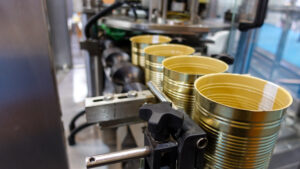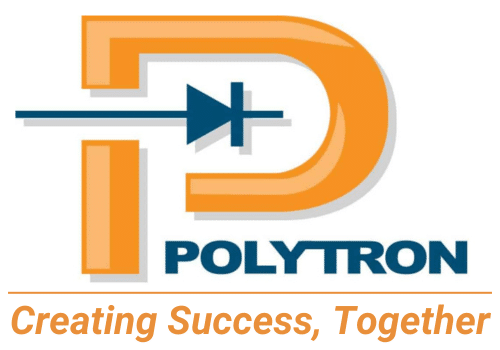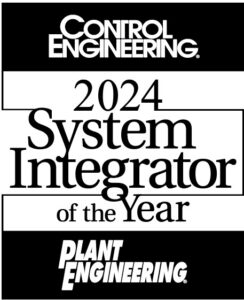Consolidating and upgrading six lines from three different factories into a single facility was a challenging task for a food manufacturer that was recently acquired by an international brand.
The newly constructed facility was to be converted into a plant capable of reliable production. To satisfy the parent company investors and maintain delivery of product to customers, the project needed to be as time efficient as possible.
The automated system was professionally designed for equipment reliability, efficiency, and consistency. The design was standard across all packaging lines in the facility, so operators recognize the interface regardless of the line or their position. The system integrator followed best practices for expedited and precise design, implementation, and startup. The system and new lines are highly productive and have low downtime achieving the parent company’s goals.
Challenge |
Solution |
Results |
Consolidating and upgrading six lines from three different factories into a single facility.
|
New automation system designed to give manufacturer full control over new lines
Consistent standards around naming, documentation, security and user interfaces devised and implemented across five lines’ automation, packaging and processing systems Best practices followed for expedited but precise and effective design, implementation and start up |
Parent company’s aggressive timeline was met
Automation system and new lines are reliable and highly productive with low downtime |
The Project
 Consolidating and Upgrade Challenges
Consolidating and Upgrade Challenges
After being acquired by an international brand, a food manufacturer faced the challenge of consolidating and upgrading six lines from three different factories into a single facility.
The newly constructed plant spanned nearly a million square feet and represented a major investment in North American growth by the parent company. Converting the enormous shell into a plant capable of reliable, efficient production was a huge task that fell to plant engineering staff. They were accomplished individuals and worthy of the charge, but also recognized it would be an difficult and risky endeavor – a once-in-a-career kind of project.
The project to consolidate the lines and transform the new building into a productive plant faced the additional pressure to be as time efficient as possible to maintain delivery of product to customers. The team also faced time pressure from the parent company, which was eager to see its funds go to good use sooner, rather than later.
Steps to Integration
On top of the many challenges of a new building and new automated canning lines, the plant Engineering Manager was concerned that the integrated automation system should be professionally designed, usable, and reliable.
The Engineering Manager’s focus was on equipment efficiency, and he needed to have confidence that problems were not with the automation system. So, he enaged Polytron to write the software supporting the packaging automation of both canning and palletizing systems for Line 1. In support of this project, Polytron designed automation to provide integrated control of the line, so the machinery would work in unison for sustainable performance:
A standard “look and feel” was designed and applied across all packaging lines in the facility, so operators could recognize the interface regardless of what position or line they work on. This enables a more flexible workforce.
- Created equipment naming standards – Polytron devised naming standards, based on a Polytron template, that ensure future ease of locating devices, equipment and alarm conditions. This included standards for sensors, valves, motors and other automation hardware, applied across multiple systems in the facility.
- Defined a common HMI visualization for operator control of packaging equipment – Polytron’s graphics library was tapped for controls. The system integrator also designed custom 3D graphics to mimic the installed equipment and utilized RA PlantPAx libraries for standard controls for sensors, valves, and motors.
- Implemented PLC code standards – To enable ease of troubleshooting, maintenance, and reliability, Polytron modified its own standard PLC code objects for advanced control of equipment for zoning, recipe integration, alarming, and system diagnostics. RA PlantPAx code objects for basic controls for sensors, valves, and motors were also used.
- Organized the multitude of Ethernet connected devices on the OT network – Polytron created a plant-wide architecture and addressing scheme for the OT network.
- Defined security standards for HMI control – The defined security standards for FactoryTalk Security spanned multiple lines with different security roles.
Performing the work in a new facility created challenges and frustrations. The infrastructure was also being installed as the team worked. The network, bathrooms, lighting, climate control systems and other basic amenities were sometimes not functioning correctly as they were under construction themselves. Despite these challenges, Polytron’s expertise played an important role supporting the production startup of Line 1 under a very aggressive, accelerated schedule – helping the business reach its goals to meet market demand.
The Need for a Trusted Advisor
As work went on, the plant Engineering Manager gained more trust in the Polytron team. He felt comfortable relying more heavily on the system integrator for additional responsibilities:
- IO system design
- Device and equipment naming standards
- Machine to machine communications standards
- Standards for PLC code
- HMI graphics visualization standards
- Security standards for plant controls
- Manage line control standards with manufacturer’s machine vendors contractors
With the success of the Line 1, palletizing systems, and the installation of multiple new lines looming on the horizon, the plant Engineering Manager asked Polytron to stay on as a trusted partner to program and startup the integration of lines 2, 3, and 4.
As Polytron reached completion on the packaging system, they also helped with initial process systems implementation and startup, applying the newly developed standards and helping the plant Engineering Manager to bring the system online in time for a visit by the investors.
Focus Troubleshooting Equipment
As the lines went live and logged production, the Engineering Manager commented that he “doesn’t have to worry about the automation system – it just works.” Thanks to Polytron’s design expertise, once the software is installed, problems with the automation system are extremely rare. If there’s any problem on the line, the staff can narrow their focus on troubleshooting equipment with confidence that the automation system is operating correctly.
Consistency of User Interfaces
An important tenet of effective software design is consistent standards. Polytron’s team was able to set up the entire plant for success due to following best practices when establishing each line.
Operators who understand the automation system on Line 1 can also operate Line 2, Line 3, and each line. Consistency of user interfaces and documentation establishes a roadmap the manufacturer’s personnel can follow in the case of maintenance, troubleshooting and even minor changes to the system – without needing to call Polytron back in.
Benefits and Results of Polytron Partnership
To date, the plant Engineering Manager has successfully commissioned 5 lines with Polytron, and he continues to serve as the lead person responsible for the automation systems in the facility. His systems are dependable and deliver consistent, quality product at all times. The lines in the facility and the automation systems that control them are highly productive, have low downtime, and are robust and reliable.




